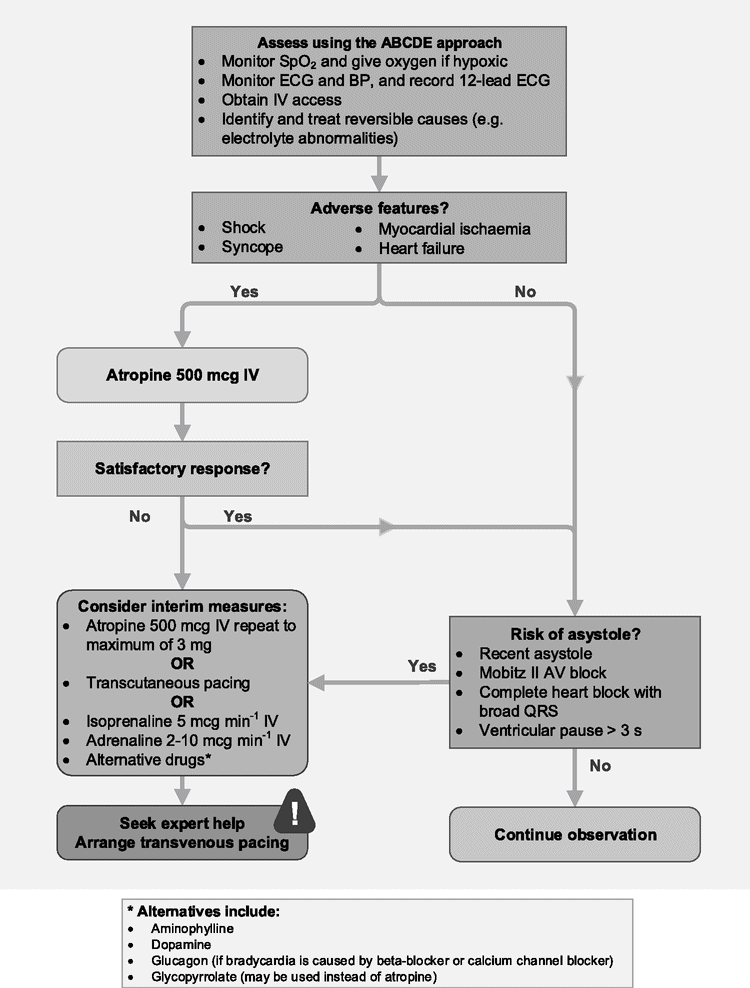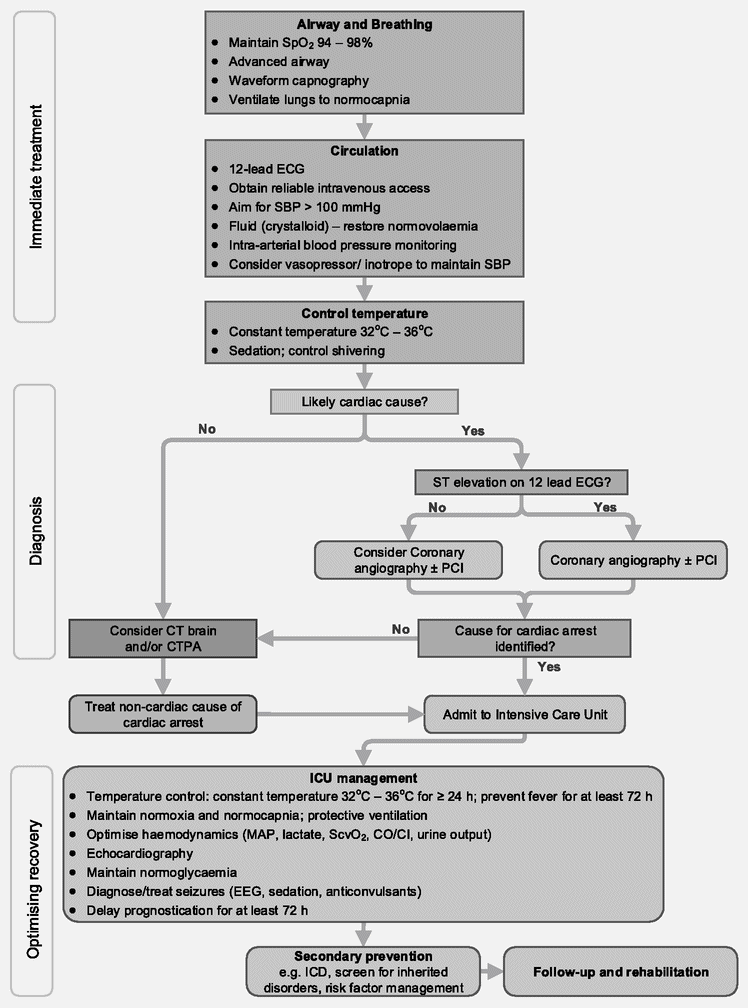Adult Advance Life Support algorithm.

Adult Bradycardia Algorithm.

Adult Tachycardia Algorithm.

Post-resuscitation Care.
Paediatric advanced life support
It is a rare and stressful occasion when anaesthetists are required to administer paediatric life support. However, it is valuable to refresh your knowledge of the paediatric life support guidelines prior to a return to work. A paediatric list may be something you feel apprehensive about on your return, and any steps you can take to make this experience more comfortable will have a positive impact on your confidence and most likely on the patient’s and parents’ experience too.
For the infrequent paediatric anaesthetist, or even the experienced paediatric anaesthetist returning to work after a break, it is worth considering some emergency calculations for every case undertaken. The WETFAG mnemonic is a well-accepted method of doing this and is also frequently used in A&E departments when a paediatric admission is expected. This is shown in Table 30.1.
Stay updated, free articles. Join our Telegram channel

Full access? Get Clinical Tree





